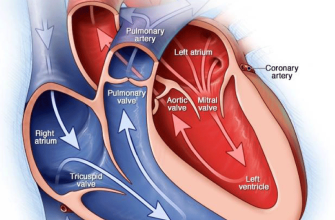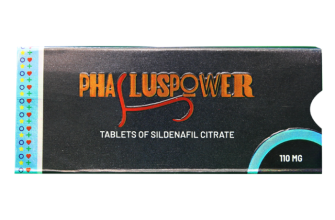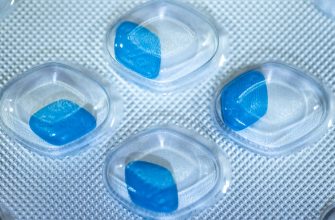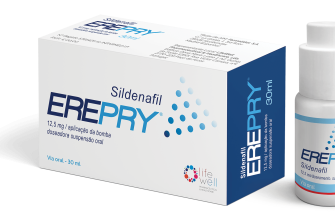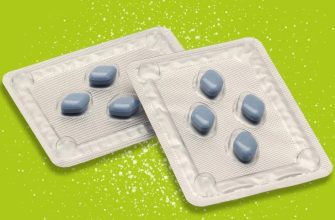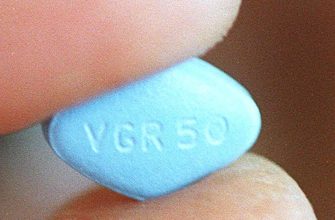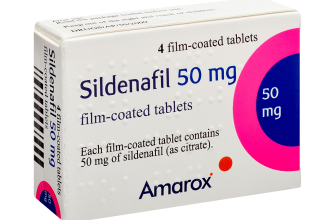For anyone using sildenafil, understanding the risks associated with its toxicity is crucial. Symptoms of overdose can include severe headaches, changes in vision, dizziness, and priapism, a painful and prolonged erection. If you experience any of these signs, seek medical attention immediately.
Monitoring dosage becomes vital to avoid potential toxicity. Stick to the prescribed amount, typically 50-100 mg, and never exceed 200 mg in a single dose. Individual reactions may vary based on age, health conditions, and use of other medications. Always consult a healthcare professional before combining sildenafil with other substances, particularly nitrates or any recreational drugs.
Staying informed about sildenafil toxicity can lead to safer use. Regular check-ups allow healthcare providers to assess any adverse effects and adjust treatment plans accordingly. Be proactive in your health management, and don’t hesitate to report any unusual symptoms to a doctor.
- Sildenafil Toxicity: An Informative Overview
- Signs and Symptoms
- Management Strategies
- Understanding Sildenafil and Its Uses in Medicine
- Mechanism of Action: How Sildenafil Works in the Body
- Signs and Symptoms of Sildenafil Toxicity
- Risk Factors and Populations at Higher Risk of Toxicity
- Management and Treatment Options for Sildenafil Overdose
Sildenafil Toxicity: An Informative Overview
Monitor patients carefully for signs of sildenafil toxicity, particularly in those with pre-existing conditions such as cardiovascular diseases. Dosage adjustments or discontinuation may be necessary if adverse effects arise.
Signs and Symptoms
Recognize early signs of toxicity, which can include headache, flushing, nasal congestion, visual disturbances, and prolonged erection (priapism). Severe cases may present with hypotension, tachycardia, and chest pain. Prompt identification of symptoms enhances effective management.
Management Strategies
If toxicity is suspected, assess the patient’s vital signs and clinical presentation. Administer supportive care, including intravenous fluids and medications to manage blood pressure. In instances of priapism lasting over four hours, immediate medical intervention is critical to prevent permanent damage. Consider activated charcoal for recent ingestions if appropriate.
Educate patients on the risks associated with sildenafil, such as interactions with nitrates and alpha-blockers that can exacerbate hypotensive effects. Reinforce the importance of adhering to prescribed dosages to minimize the risk of toxicity.
Understanding Sildenafil and Its Uses in Medicine
Sildenafil is primarily recognized for its role in treating erectile dysfunction (ED). By inhibiting phosphodiesterase type 5 (PDE5), it enhances blood flow to the penis, facilitating erections in response to sexual stimulation. Dosage typically starts at 50 mg, taken about one hour before sexual activity, but may be adjusted depending on individual response and tolerability.
Additionally, sildenafil’s uses extend to managing pulmonary arterial hypertension (PAH). In this condition, sildenafil relaxes blood vessels in the lungs, improving exercise capacity and functional ability. For PAH, the recommended starting dose is 20 mg taken three times a day, with adjustments made based on clinical response.
Research continues to explore sildenafil’s potential in other areas, such as heart failure and Raynaud’s phenomenon. Emerging data suggests it may improve exercise tolerance and vascular function in patients with these conditions. However, further studies are essential to solidify these findings.
As with any medication, awareness of potential side effects is critical. Common side effects include headaches, flushing, and dyspepsia. Serious complications, although rare, can include sudden hearing loss or severe cardiovascular events, especially in patients with pre-existing conditions.
Consulting a healthcare provider before starting sildenafil ensures appropriate use, especially for those on nitrates or with cardiovascular issues. Appropriate medical evaluation helps to establish whether sildenafil aligns with individual health needs and enhances overall quality of life.
Mechanism of Action: How Sildenafil Works in the Body
Sildenafil primarily operates by inhibiting phosphodiesterase type 5 (PDE5), an enzyme that breaks down cyclic guanosine monophosphate (cGMP) in the corpus cavernosum of the penis. By blocking this enzyme, sildenafil increases cGMP levels, promoting relaxation of smooth muscle and dilation of blood vessels. This process enhances blood flow, facilitating an erection in response to sexual stimulation.
The drug’s action starts with the release of nitric oxide (NO) during sexual arousal. NO activates guanylate cyclase, leading to an increase in cGMP. Sildenafil amplifies this effect by preventing the degradation of cGMP, thus maintaining prolonged vasodilation and erection.
The selectivity of sildenafil for PDE5 over other phosphodiesterases (like PDE1 and PDE6) minimizes side effects, making it safer for cardiovascular functions while targeting erectile tissue specifically. Its half-life is approximately four hours, allowing for convenient dosing without continuous effects.
Understanding sildenafil’s mechanism can inform proper usage. Taking the medication approximately 30 minutes to one hour before sexual activity optimizes its efficacy, ensuring the desired physiological response during arousal.
Awareness of factors influencing sildenafil’s effectiveness is beneficial. Food intake, particularly high-fat meals, may delay absorption and onset of action. Therefore, it’s recommended to avoid heavy meals before taking the medication for optimal results.
Signs and Symptoms of Sildenafil Toxicity
Recognize the warning signs of sildenafil toxicity to prevent serious complications. Monitor for the following symptoms:
- Severe Headache: Persistent and intense headaches are common, resulting from vasodilation.
- Flushing: Noticeable redness in the face and neck due to increased blood flow can signal toxicity.
- Dizziness or Lightheadedness: These symptoms may arise from sudden drops in blood pressure.
- Visual Disturbances: Blurred vision, color vision changes, or increased sensitivity to light can occur. Report these immediately.
- Nausea or Vomiting: Gastrointestinal discomfort may accompany toxicity and indicate the need for medical evaluation.
- Prolonged Erection (Priapism): An erection lasting more than four hours requires urgent medical intervention to prevent tissue damage.
- Chest Pain: This serious symptom may indicate cardiac complications; seek help quickly if experienced.
If symptoms arise, discontinue use and consult a healthcare professional for assessment and potential treatment.
Risk Factors and Populations at Higher Risk of Toxicity
Individuals using sildenafil should be aware of several risk factors that increase the likelihood of toxicity. Patients with pre-existing cardiovascular conditions, including hypertension and coronary artery disease, experience a heightened risk due to the drug’s effects on blood pressure and heart function.
The elderly population often faces greater susceptibility, primarily due to polypharmacy and age-related physiological changes. Reduced liver and kidney function in older adults can hinder sildenafil metabolism, leading to elevated drug levels and potential toxicity.
Patients taking nitrates for chest pain or other cardiovascular issues should avoid sildenafil completely. The combination can cause dangerous drops in blood pressure, increasing the risk of serious cardiovascular events.
People with liver impairment, such as viral hepatitis or liver cirrhosis, are more likely to experience adverse reactions. Dosage adjustments and close monitoring are necessary for these individuals to prevent accumulation of the medication.
Those with a history of priapism or anatomical deformities of the penis should approach sildenafil with caution, as they may be at increased risk for prolonged erections leading to serious complications.
Interactions with certain medications, particularly antiretrovirals, antifungals, and some antibiotics, can also raise toxicity risks. Patients should disclose all current medications to their healthcare provider to assess potential interactions effectively.
Men with severe renal impairment require careful consideration, as reduced clearance of sildenafil can lead to elevated plasma levels. Adjustments in dosage may be necessary based on individual renal function.
Adopting a proactive approach by consulting healthcare professionals about personal risk factors can help manage and mitigate the potential for sildenafil toxicity effectively.
Management and Treatment Options for Sildenafil Overdose
Immediately assess the patient’s airway, breathing, and circulation. Monitor vital signs closely, as sildenafil overdose may lead to hypotension, tachycardia, or other cardiovascular issues. If significant hypotension occurs, position the patient in a supine position and consider intravenous fluid resuscitation.
Activated charcoal can be administered within one hour of ingestion to reduce absorption, provided the patient is alert and has a gag reflex. Avoid using syrup of ipecac as it is not recommended.
In cases of severe hypotension, treat with intravenous fluids and, if necessary, vasopressors such as norepinephrine to stabilize blood pressure. Continuous monitoring in a clinical setting is crucial, as complications might arise hours after overdose.
If the patient experiences priapism lasting longer than four hours, perform corporal aspiration or consider surgical intervention to prevent long-term damage.
For patients with visual disturbances or sudden hearing loss, consult an ophthalmologist or otolaryngologist urgently. Employ supportive care for these complications.
Educate the patient about dosage recommendations and the risks associated with exceeding them. Review possible interactions with other medications that may contribute to toxicity.


